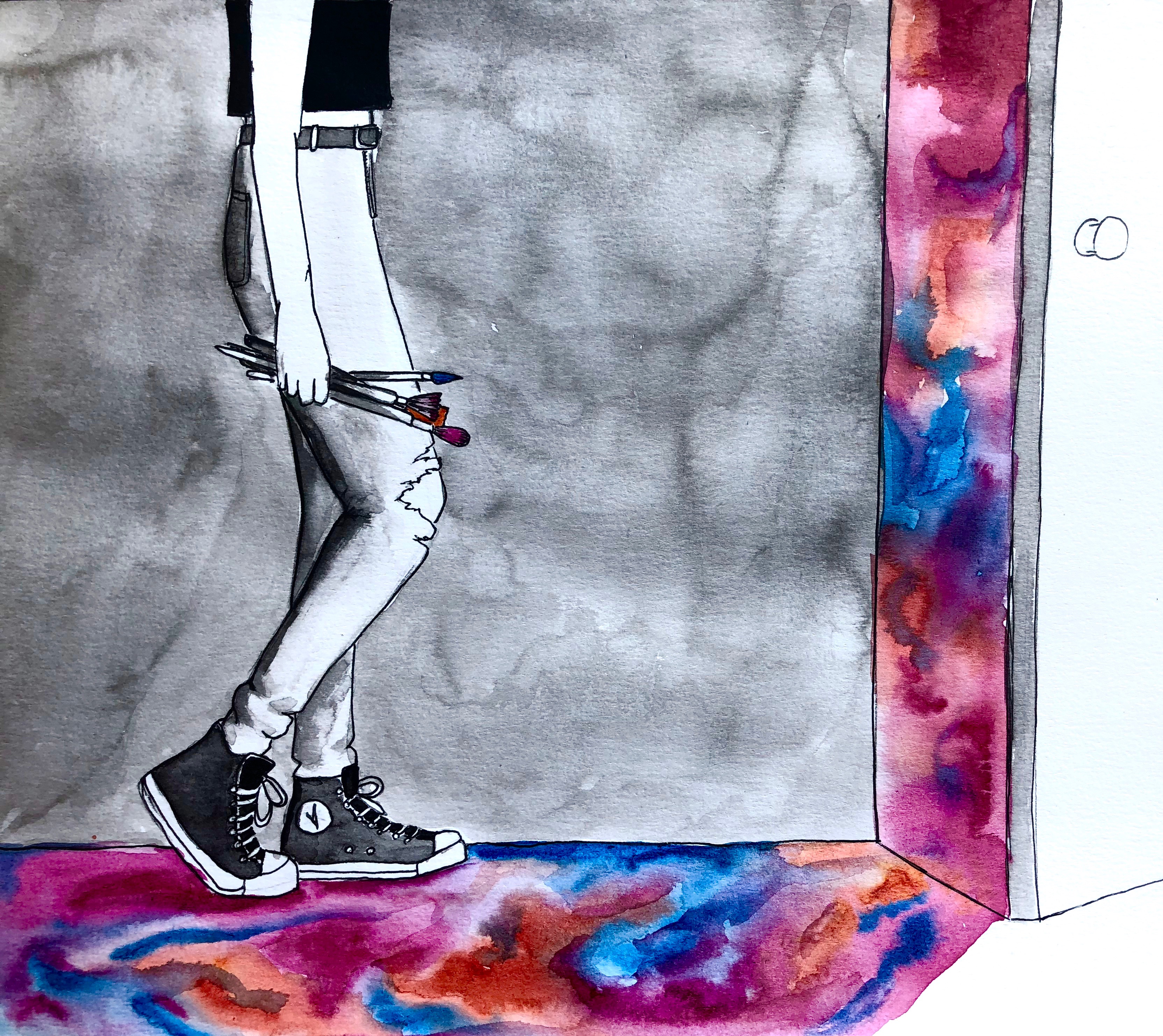Mariah Furtek: UCLA needs to paint clear path to art classes for non-art students

(Hanna Rashidi/Daily Bruin)
By Mariah Furtek
April 15, 2018 5:10 p.m.
What do you call a liberal arts education without art classes?
You had better ask UCLA to find out.
UCLA students not majoring in art don’t have much of a chance to enroll in art classes. Lower division, introductory art classes – such as those covering ceramics and sculpture – are largely restricted to students majoring in art. This is a shame, as these classes can be beneficial to non-art students interested in the field, allowing them to cultivate their passions and explore interests outside their majors.
The shortage of art classes relative to demand isn’t the art department’s fault, though. The department has been chronically underfunded, and space in art classes is limited by physical studio size.
That said, both the art department and UCLA could do more to help nonmajors pursue their artistic passions on campus.
UCLA needs to support the art department by allocating some student fees toward funding extracurricular art classes that cover the basics, such as the subjects taught in introductory courses that non-art students currently have difficulty enrolling in. The department could employ professors from the art department to teach these courses, which would help students get a better sense of the program in case they were considering an art major. Students could cover the cost of supplies by paying small membership fees in order to enroll.
These minor changes would be beneficial to non-art students who are currently relegated to art class waiting lists.
Ava Gordon, a second-year pre-psychobiology student, came to UCLA with a passion for art and had created her own portfolio that she hoped to expand in college. Once she arrived, however, she encountered many difficulties when attempting to enroll in art classes, she said.
Gordon added she met with the art department representative at the annual Major Blast fair held in Pauley Pavilion and learned her chances of getting into an art class as a nonmajor were slim and left entirely up to the whim of the instructor.
“I can remember them recommending I join a club instead if I wasn’t serious enough about art to major in it,” Gordon said. “I was really discouraged by this.”
Some non-art students, though, have an advantage over others when enrolling in art classes due to their connections to the department through friends.
Tara Kazimi, a second-year psychobiology student interested in art, said that while she knows non-art students who have difficulties enrolling in art classes, she successfully enrolled in two of the three art classes she tried to take by emailing professors in advance and attending classes during the first few weeks.
UCLA’s art department has a lot of visiting instructors whose emails are typically not listed online, Kazimi said. Instead, she relied on her friends within the art department to contact these professors. The situation, however, is bleak for those who do not know students within the art department or have difficulty tracking down art professors’ emails.
UCLA administrators laud themselves on the school’s ability to attract an intellectually curious, diverse student body. But as with Gordon’s case and others like hers, UCLA’s promises of a multidisciplinary learning environment fall flat.
And this should be concerning, as an education in art can help non-art students receive a well-rounded UCLA experience. Kazimi said lengthy studio courses allow nonmajors to experiment with a more serious commitment to art, which in turn helps them determine if a full-or part-time career in art is for them.
The art department can significantly improve the situation for nonmajors without spending extra money. Visiting faculty teach a good number of art classes, and the department merely needs to make its faculty’s emails readily available on course and department websites. The department can also expand the artistic opportunities available to nonstudents by enlisting professors within the department to host extracurricular membership-based courses, similar to the recreational classes at the John Wooden Center .
The art department could set aside studio space outside of regular classes to accommodate these students, and UCLA administrators could work out a financial plan with Residential Life that sets aside some housing-specific fees to cover the cost of studio space and instructors. Students themselves could also supplement the school’s support with a small membership fee, like the quarterly fee students pay for recreational classes at JWC.
While feasibility might present an issue, the art department is open to expanding opportunities for nonmajors.
“We would welcome the opportunity to collaborate with other areas on campus that may develop more extracurricular arts programming,” said Andrea Fraser, chair of the UCLA department of art, in a statement.
Most people come to college without a clear idea of what they want to study. And that’s perfectly fine: We’re all here to explore what we’re passionate about in order to carve out fulfilling life paths. It is paramount the university gives students every opportunity to take courses in fields they are interested in – regardless of their majors.


